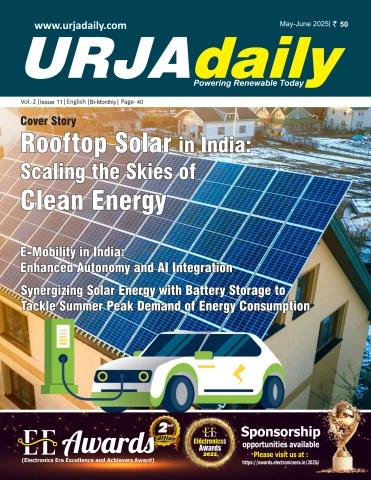The Ministry of New and Renewable Energy has provided an update of India’s renewable energy sector in recent press releases. As of January 2025, the country’s non-fossil fuel energy capacity has reached 217.62 GW. The wind power sector has grown significantly, reaching an installed capacity of 48.16 GW, driven by initiatives like the Centralized Data Collection and Coordination (CCDC) Wind Initiative, which has enhanced wind resource mapping and contributed to over 10 GW of new capacity between 2020 and 2024. Further, in this space, in 2024, the government approved a Rs 74.53 billion Viability Gap Funding scheme to develop India’s first offshore wind energy projects, including 1 GW of capacity off the coasts of Gujarat and Tamil Nadu.
Solar energy has seen rapid growth under the National Solar Mission. India’s solar power sector has witnessed an extraordinary 3,450 per cent increase in capacity over the past decade, rising from 2.82 GW in 2014 to 100 GW in 2025. As of January 31, 2025, India’s total installed solar capacity stands at 100.33 GW, with 84.10 GW under implementation and an additional 47.49 GW under tendering. Solar energy remains the dominant contributor to India’s renewable energy growth, accounting for 47 per cent of the total installed renewable energy capacity. In 2024, a record-breaking 24.5 GW of solar capacity was added, reflecting a more than two-fold increase in solar installations compared to 2023. 2024 also saw the installation of 18.5 GW of utility-scale solar capacity, a nearly 2.8 times increase compared to 2023. Rajasthan, Gujarat, Tamil Nadu, Maharashtra, and Madhya Pradesh are among the top-performing states, contributing significantly to India’s total utility-scale solar installations.
The rooftop solar capacity has increased from 90.8 MW in 2016 to 11,503 MW by 2024, while the number of solar parks has risen from 34 in 2016 to 58 in 2024, doubling their total capacity to 40 GW. The country’s hybrid and round-the-clock (RTC) renewable energy projects are also advancing rapidly, with 64.67 GW under implementation and tendered, bringing the grand total of solar and hybrid projects to 296.59 GW. Other renewable energy sources have also progressed. Small hydro power capacity has reached 5.10 GW, and biomass cogeneration, including both bagasse and non-bagasse, now stands at a combined 10.72 GW. Waste-to-energy initiatives have resulted in a cumulative installed capacity of 619.94 MW.
The National Green Hydrogen Mission, launched in 2023, is positioning India as a global leader in green hydrogen production, attracting investments exceeding Rs 8 trillion. The initiative aims to establish a hydrogen-based economy with a production target of 5 million metric tons by 2030, creating 6,00,000 jobs. By 2024, tenders had been awarded for 412,000 tonnes of annual green hydrogen production, and a 50 per cent subsidy was introduced for electrolyser manufacturing.













